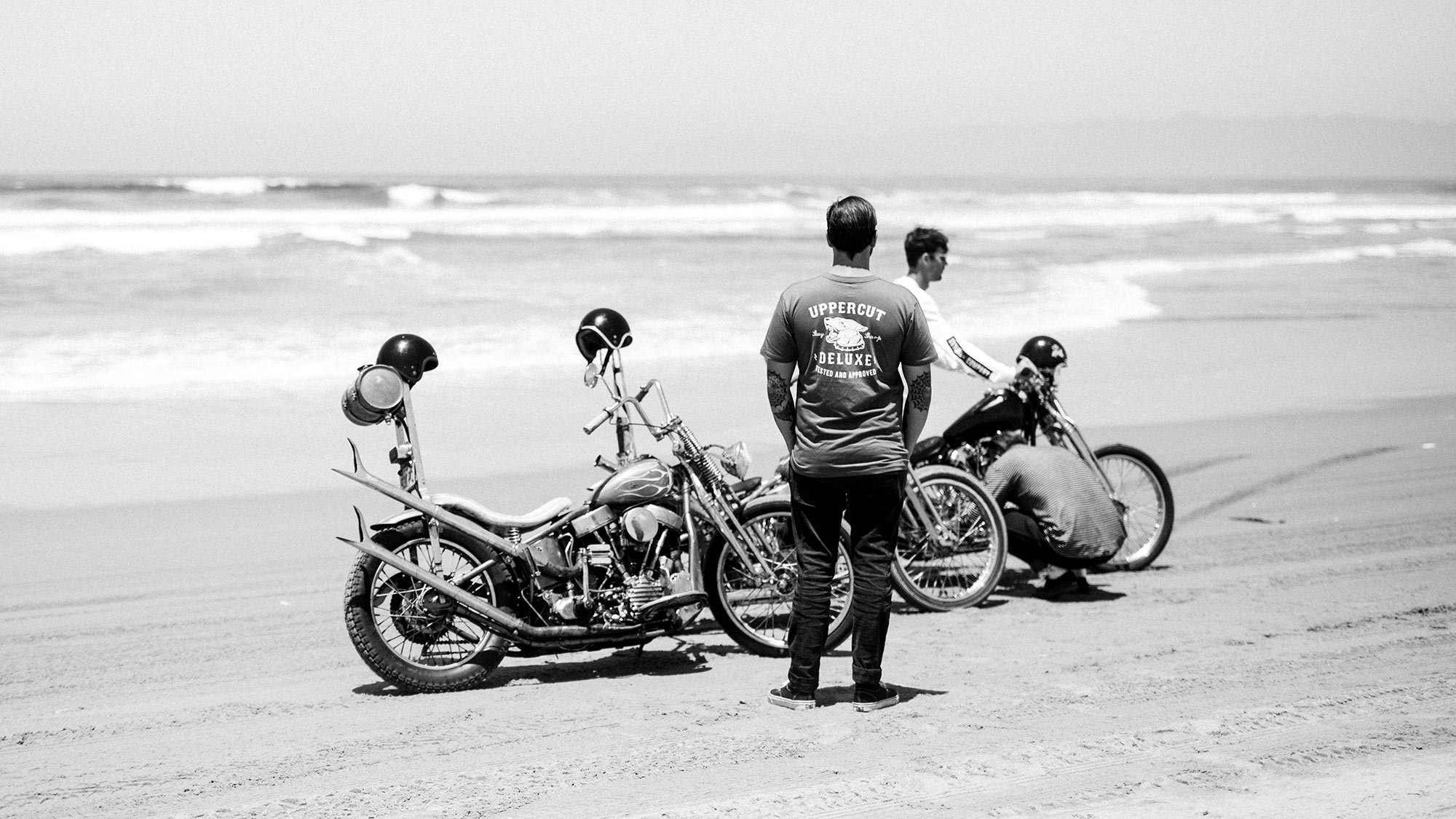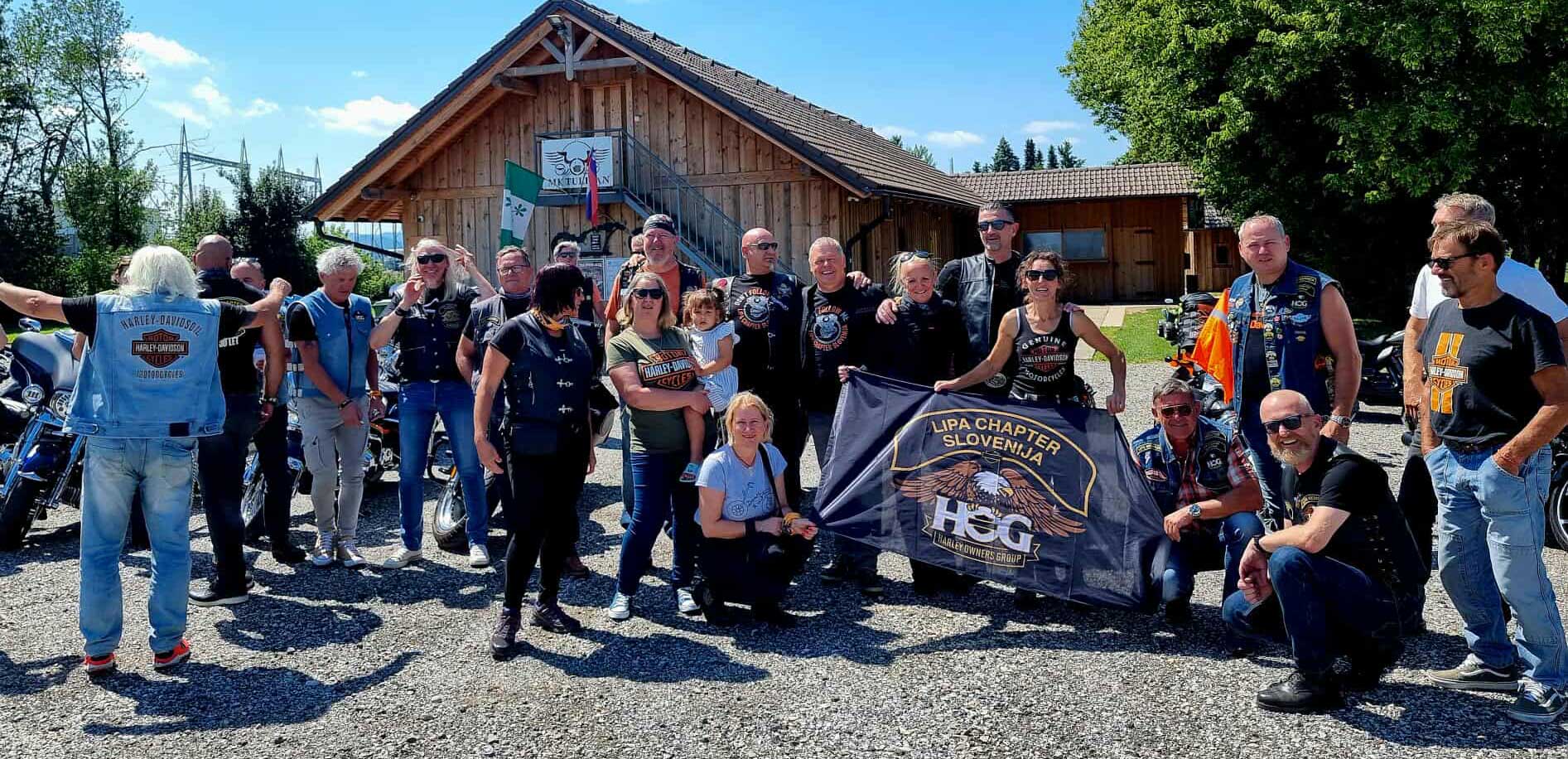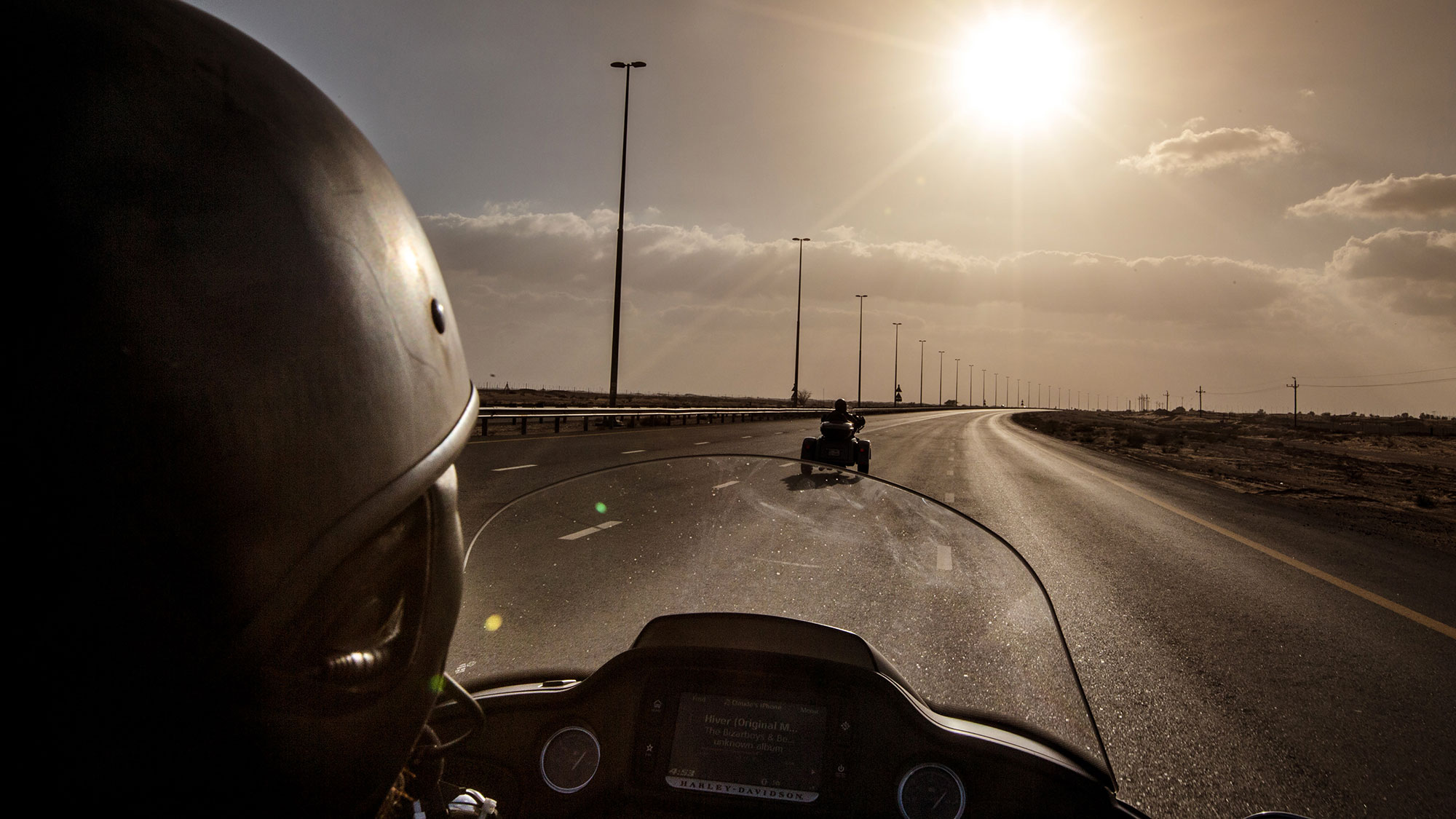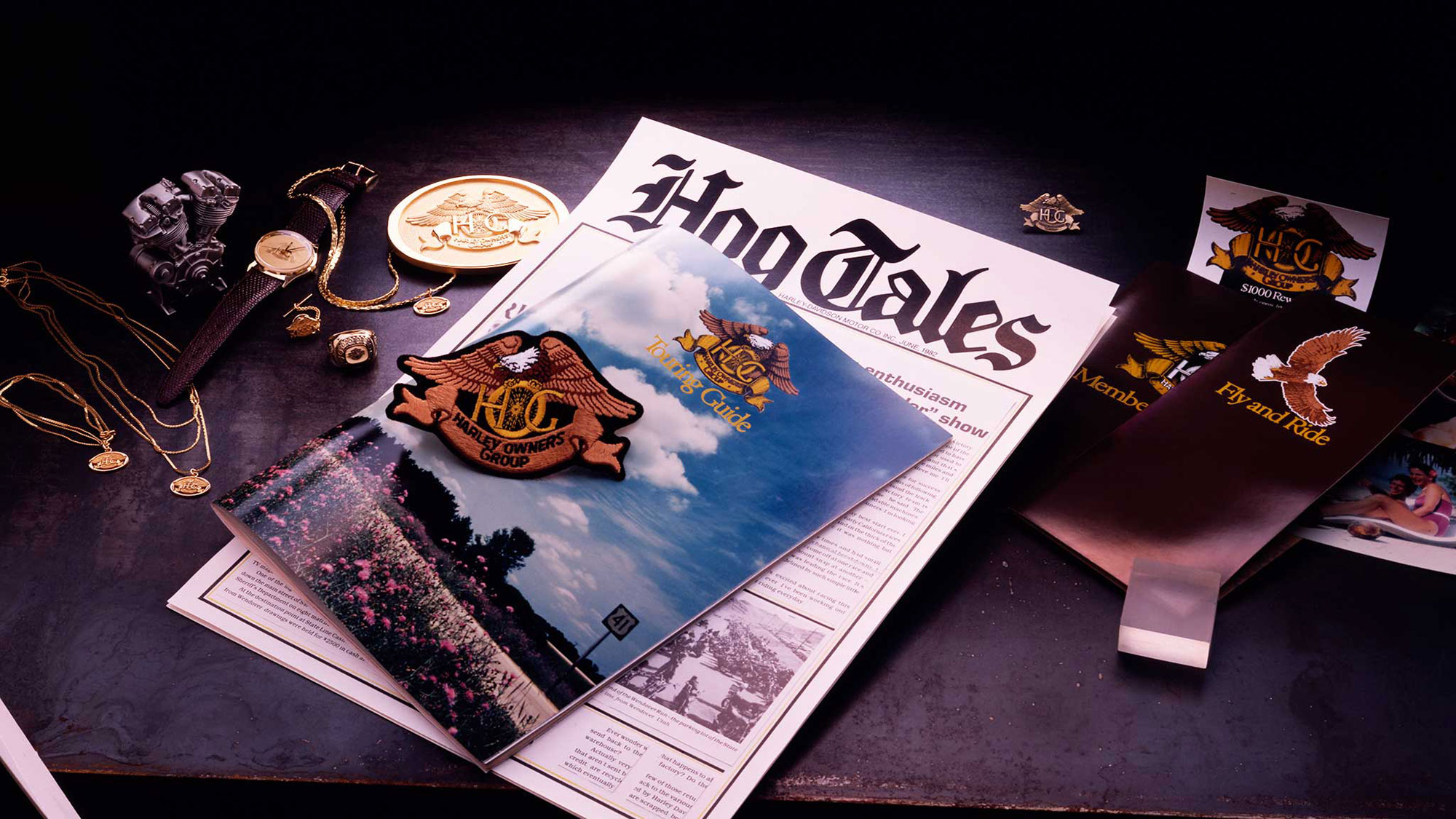
THE BIRTH OF H.O.G.
Steve Piehl, a key figure in starting the Harley Owners Group® back in the early 80s, discusses the birth of H.O.G.® and how it has changed since those early days
Photos: Harley-Davidson Archives
In 1982 I was a young man working at Harley-Davidson Motor Company in Milwaukee, US, when I got a tap on the shoulder from my boss. He wanted me to start a new project – setting up the Harley Owners Group®.
Let me set the scene a little. I had just joined Harley-Davidson straight out of college, working in the marketing department on events and promotions. The early 1980s was a tough time for Harley-Davidson; there was a recession and the Motor Company was fighting its way through it, along with all the other motorcycle manufacturers. There had been talk for years within the company that we had a tremendously loyal customer base and that we should do something with that – harnessing the energy and somehow connecting them more strongly with Harley-Davidson.
Those thoughts finally came together in September 1982 when my boss handed me a three-inch-thick ring binder (remember those?) and a copy of a speech he had just given at the Dealer Meeting, outlining what H.O.G.® was going to be. He basically told me, ‘Here is a binder filled with background research and some proposed logos; here’s what I’ve told everyone the club is going to be; I think this project will work really well for you, so get on with it. We need it up and running by January 1 – you’ve got three months!’
The initial outline of the way the club would work was this: it would be a new organisation to support our loyal customers and connect them to the Motor Company. That is why the original benefits were focused on services – the main ones being the Breakdown Recovery service and the Theft Reward programme. At that time, if anything went wrong while you were travelling and you didn’t have a friend with a van, recovery was a problem – and bike theft was a worry for members too.
The membership pack at that time was very 1980s, with a pin and patch, a membership card (I still have my original H.O.G. number, number 12!) and the crowning glory – the Touring Handbook. At that time there was no available listing of all the Harley-Davidson dealers, so this provided a way for H.O.G. members to plan their travels and connect with Harley-Davidson dealers along the way. It was a boon for dealers also, to have their contact details provided to thousands of riders every year – we all have friends with huge collections of t-shirts or collectibles from dealer visits, right?
There are lots of stories out there about the early days of H.O.G., but one thing I can tell you that was missed in that early phase was how important the social aspect of the group would be. Yes, there were events – mainly based around races like Daytona – but the social aspect of the Harley Owners Group was something that wasn’t really considered at the time, yet it was one of the things that went on to make H.O.G. so successful.
The other important thing is how starting H.O.G. changed Harley-Davidson. The company knew it had a loyal customer base, but before H.O.G. there was no real way of connecting with them. H.O.G. was effectively the start of the ‘close to the customer’ approach that has defined Harley-Davidson ever since. That was the start of Harley staff members being heavily involved in events, and company executives interacting with customers. And although we missed the social aspect of the club when we first set it up, talking to dealers and customers soon allowed us to fix that. So H.O.G. completely transformed the way we interacted with our riders, and has been watched and adopted by so many other companies who interact with their customers.
We also never realised at the start that there would be such a demand for H.O.G. activities at a local level, until dealers started coming to us and saying they wanted to start a local group based at their dealership. With that, the chapter system was born…
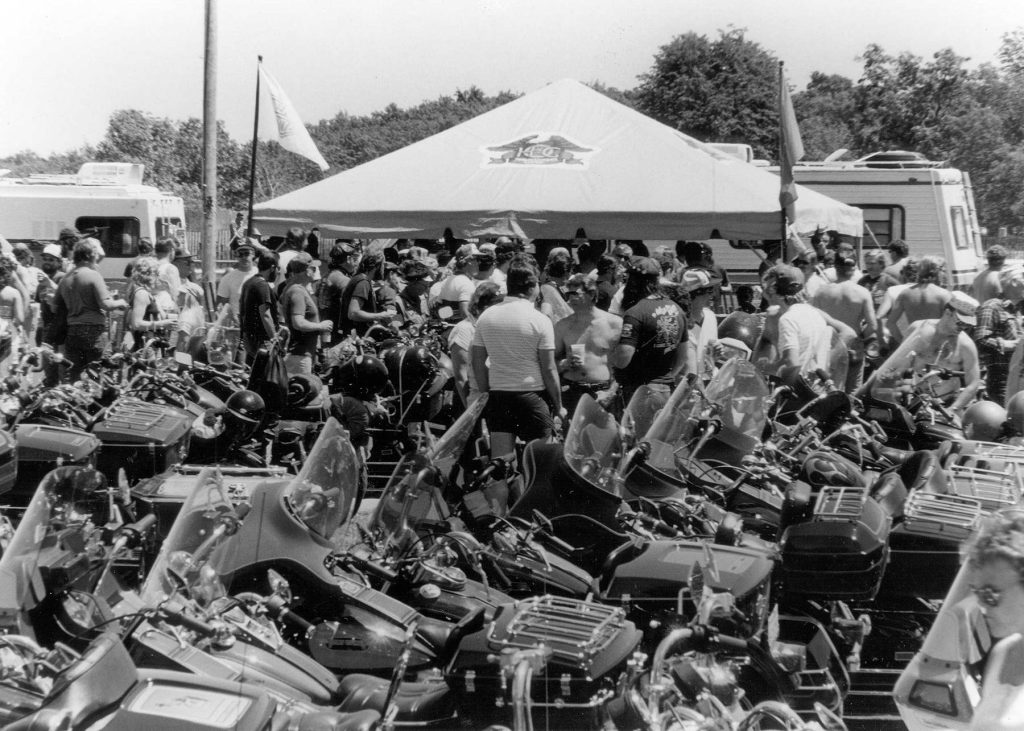
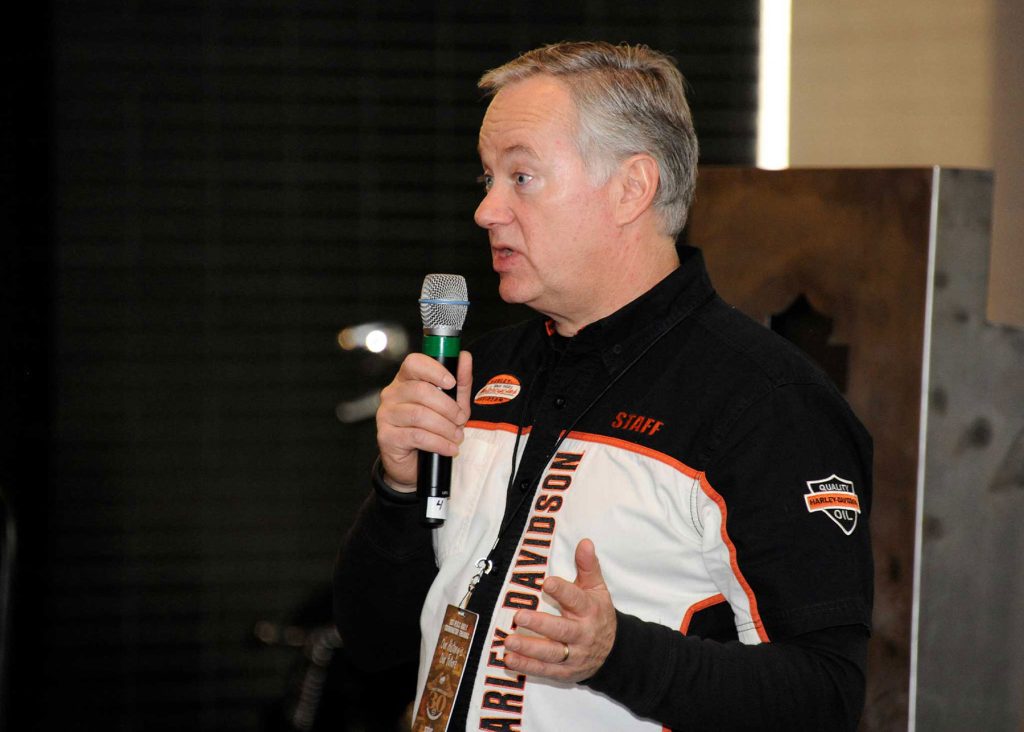
Steve Piehl – one of the founders of H.O.G.® – and John Warr of Warr’s Harley-Davidson® and Chapter Director/Founder of Chelsea & Fulham, London, discuss the development of the H.O.G. chapter system
Steve Piehl: When we started H.O.G.® in 1982, we never realised that there would be a demand for local memberships – the concept was that H.O.G. would be a service organisation like the AAA (American Automobile Association) with a little touch of social through events. So the chapter concept was never built in initially, but dealers soon came to us and said, ‘We want to start up a local group based at our dealership under the H.O.G. banner’. We said, ‘Yeah, seems like a good idea!’, and by late 1983 we were able to roll that out to make H.O.G. local and personal.
John Warr: We set up our local H.O.G. group in the early 1980s when sales were picking up again with the launch of the Evo motor, and lots of new people were coming into the dealership. It meant we could offer options for rides that would be of interest to us. We wanted it to be informal, giving our customers something to do – the opportunity to use their bikes.
We were familiar with the concept of a club linked to the dealership because my father had been a founding member of the Harley-Davidson Riders Club – that had been in place in the UK since 1949 and we were, and are, proud to back it. The Riders Club tended to be attractive to the guys with older bikes, Shovels and earlier, and that was fine – H.O.G. was more aimed at the new customer or new rider. If you love to ride, like I do, you are always planning that next adventure and H.O.G. is the perfect framework to do that within.
One of the early decisions with our H.O.G. group was that it would be free – we didn’t want to charge. We wanted it to be very much based on ‘ride and have fun’ and lots of people liked the informality of it. Because everyone has so many things they want or need to do – so many things to think about as well as riding their bike – it means they can just turn up when they can. Some participate just once or twice a year, but people feel loyalty to the group because it has been running for 30 years; it has a bit of history and people like the tradition with how we do things like the Road Captains dinner at Christmas, and the trophies given out to members. Of course, we are always thinking how we can make it even better, and so things change and develop over time, especially with the impact of social media. Yet the heart and soul of it is that it’s a riding club; it is to have fun and ride the bike.
You have to remember, while it may seem simple to us to just jump on a bike and ride 1,000 miles to another country, for many people who have just got their bike or who have come back into biking, it is daunting – how to do it, where do you stay, where do you put your stuff on the bike – so you need a menu of events. So in summer we plan a trip to one of the big Harley-Davidson events in the south of Europe where it is warmer, and around that are trips with different degrees of difficulty, from Sunday ride-outs, to perhaps a little trip to Normandy or Calais to pick up some wine and cheese, to a trip to the US to pick up rental bikes. People who initially just do a day ride may be drawn into a longer trip; that customer may become a friend and then it turns into something else.
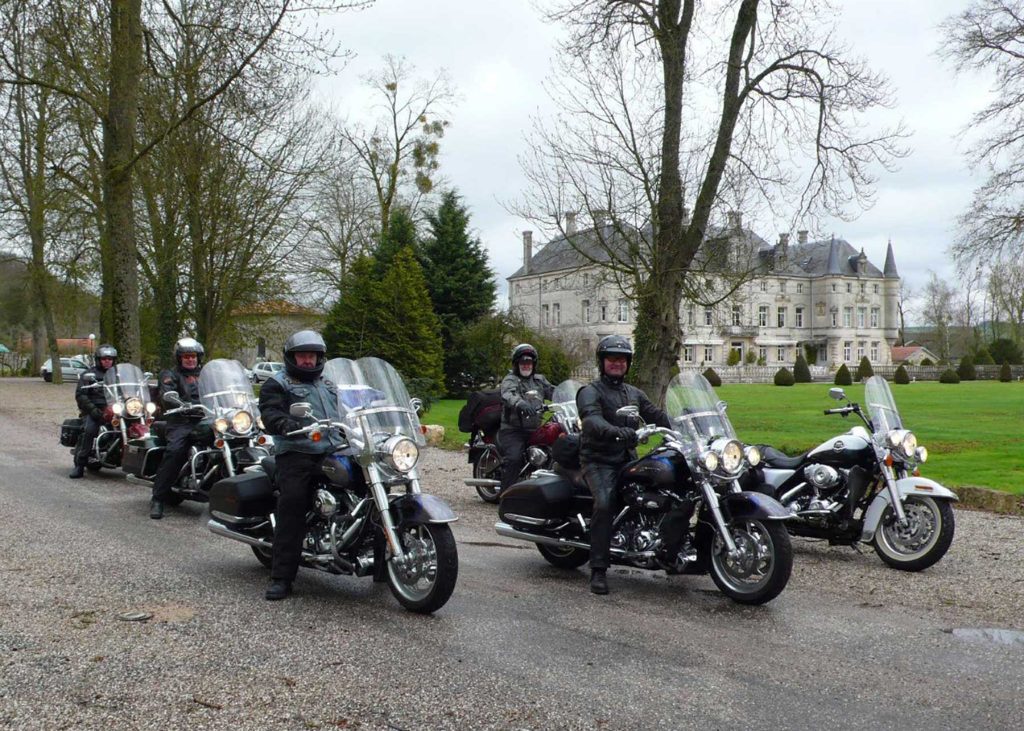
A Chelsea & Fulham chapter H.O.G Road Captains trip to France in April 2008. Photo: John Warr

Steve: That is how you are nailing it, John – we live in a world that is personalised, not one size fits all, so the successful organisations are based on variations of things, offering a multitude of ways to experience the ride. We have seen that people buy a Harley® because initially they want to ride to certain areas and see local sights, then the rider experiences a mental change when they take an overnight trip on their motorcycle – that opens up the world to them… now they can go anywhere! So I’ve always encouraged people to go on overnight trips, because that can really open up the adventure for people who ride and love Harleys.
John: Yes, that’s why this year has been so tough for those who love to jump on their bike and ride. It’s why we continue to plan for next year and why we have almost completed next year’s list of activities. Maybe some of our March and April events might not happen, but things will come back.
Steve: I love the optimism in your remarks, John. This year I have put fewer miles on my bike than I wanted to, especially with the cancellation of rallies and trips; but people need to say to themselves, ‘When we come out of this, there will be a way to get back on our bikes if we want to ride as a group’, thanks to the work that people like John do.
I would say, as we come out of this situation, H.O.G. members have a head start because the creation of events will happen again. They may be slightly different, but they will come back. Even recently when I took a ride it felt almost like normal; it felt almost like there was no pandemic, and all those great feelings I had last year when I was riding came back. In many ways, motorcycling is like the ultimate social distancing; on a bike you can be on your own, or even in a small group of friends you can maintain the distance that allows you to feel comfortable. So I would say to H.O.G. members – when the opportunity arises, just get on your bike and go!
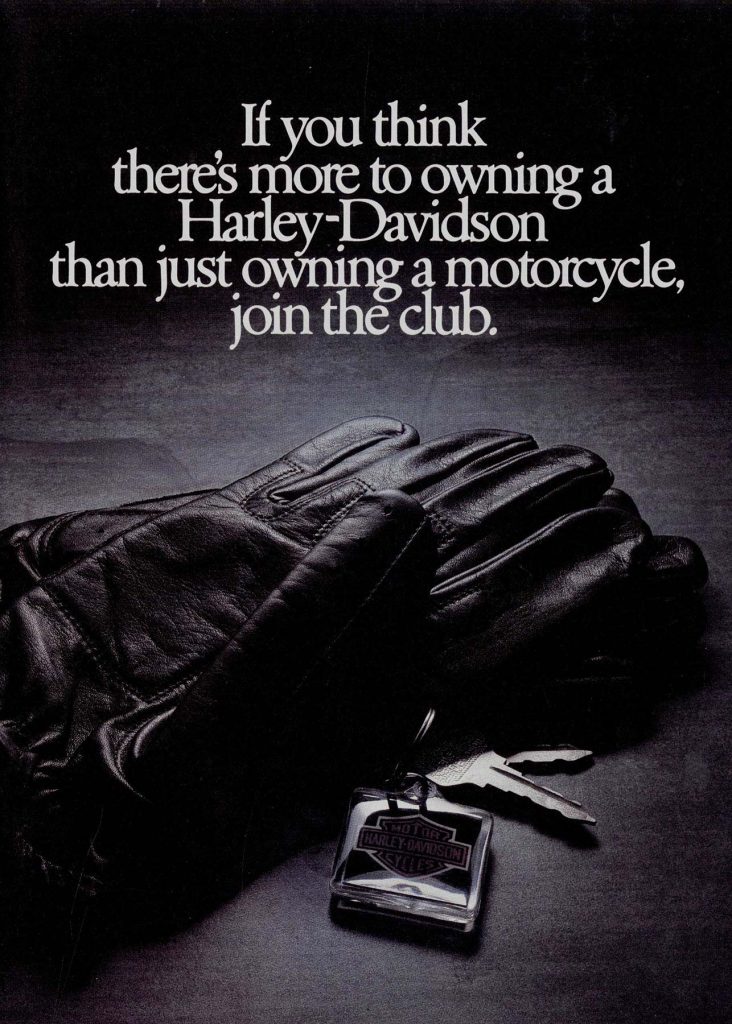
Tags:
Read more tales from the Harley Owners Group!
FOUNDED BY BARBERS USING THE PRINCIPLES OF TIMELESS STYLE, UPPERCUT DELUXE PRODUCTS PROVIDE A MODERN YET TRADITIONAL APPROACH TO MEN’S GROOMING
Inspired by the timeless style of the 1950s barbershop, Uppercut Deluxe is a modern,
yet traditional approach to men’s grooming
Marking 30 years of H.O.G. Lipa Chapter Slovenija
Members of H.O.G. Lipa Chapter Slovenija celebrated three decades of friendship, camaraderie and many kilometres of riding together
From France to the Middle East – a journey
It has been a long and interesting journey so far for passionate Harley-Davidson enthusiast Claude Abry
